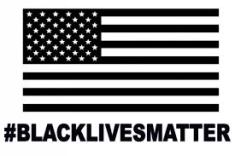Repost: You’re Not at Your Best When You’re Stressed
July 15, 2017 Leave a comment
Recently, I was privileged to sit on a panel at a local independent school when they previewed the documentary, American Promise to students, parents, and faculty. The film by Joe Brewster and Michèle Stephenson vividly captures the 12-year school experiences of their son, Idris and his best friend, Seun while attending the prestigious Dalton School in Manhattan.
The account of these two Brooklyn boys as their paths diverged in high school provided the all-too-common story of young men—and others—having to transition daily from a familiar and beloved home community to a new setting with different norms, attitudes, language, behaviors and expectations. It’s not unlike the sometimes tricky high school to college transition for many students.
Like Idris and Seun, I too had to make a transition, albeit much later, when I was admitted to a previously all-white magnet high school on Long Island. My six-mile bus ride was a metaphor for the cultural distance I had to traverse, being assaulted daily with questions about my competence, my hair, or music. It was a strange new world in which I had to learn to function.
Not surprisingly, I struggled academically in my first year at the new school while trying to discover the written and unwritten rules, navigate new social dynamics, and suddenly having to examine my racial identity, all the while taking tough classes. It was an emotionally draining period.
The main lesson I learned was this: You’re not at your intellectual best when you’re under social and emotional stress.
Ultimately, I graduated in the top 10 percent of my class, but I learned important lessons along the way that apply to any transition, especially the transition from high school to college.
- Gather Information about the School or College.
It’s striking how many students select a college sight unseen! These students who fail to do their homework are certain to struggle with their transition. It’s important to visit the school, spending as much time as possible meeting with professors, administrators and students. From home, follow student blogs; subscribe to the school newspaper and college Facebook page. Read everything students publish about their college experience. You’ll begin to paint a mental picture about the expectations and norms that make up the school culture.
- Form Strong “Vertical” and “Horizontal” Relationships.
Students who are successful making the transition report having good relationships with teachers (faculty), and also have a strong and supportive peer group according to my research and others. Finding one or more mentors on campus—an administrator from your home town, a teacher or faculty member with similar interests—is key to learning the rules and, most importantly, having someone to advocate for you.
Likewise, forming a posse that has your back, but who also will academically encourage and challenge you is critical. Here, forming study groups, joining a student organization and getting involved in campus committees are great ways to build your social connections and learn the rules, even if you tend toward introversion like me.
- Be Secure in Who You Are.
The school or college experience is not just about your intellectual development, but these institutions are also supposed to grow you emotionally, socially, and physically. That said, in my own research, students who are most successful in college are also most secure in their racial or ethnic identity. I’ll extend these identity qualifiers to gender, religious, and other characteristics that are important (salient) to you. In other words, students are less prone to suffer from stereotype threat—the under-performance that occurs when a negative stereotype about them is triggered (i.e., “you got admitted because of affirmative action”, or “girls aren’t good in math).
Being comfortable in your skin is an antidote to feeling that you have to prove something. You’re the only one you have to satisfy (and God, depending on your faith identity).
Epilogue
In the end, Idris graduated from the Dalton School, while Seun transferred to, and graduated from a public high school better suited for him. The boys and their parents learned to manage their transitions, and in Seun’s case, he moved to a school with lower cultural boundaries to cross.
Managing your transitions, whether by making the rules explicit through enhanced social connections, examining your motivations, or by bringing the worlds closer positions you to perform at your best.
For more information, check out my new book, “Working Smarter, Not Just Harder: Three Sensible Strategies for Succeeding in College…and Life.”
Share this post with others who are making transitions, and follow me at www.karlwreid.com or @educator2us on Twitter.





Recent Comments